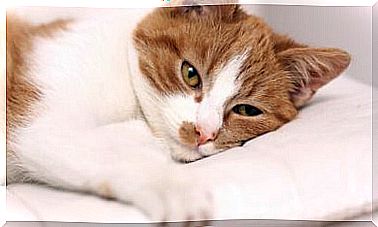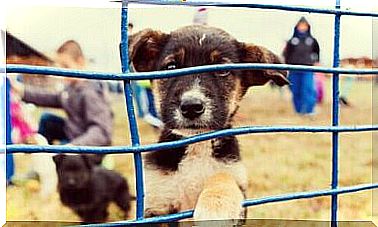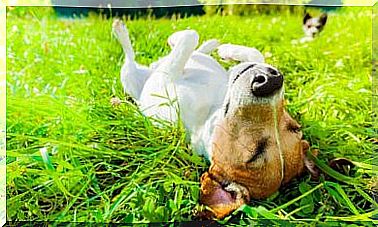Porcupine: Characteristics, Habits And Curiosities
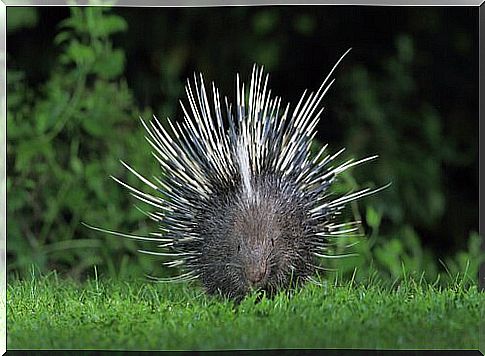
The porcupine ( Hystrix cristata ) is a very popular rodent. Its fame is due to its very particular appearance. As you know, in fact, the whole body is covered with pointed spines which represent an impenetrable shield against possible threats. A fearsome defense weapon that makes porcupines a very complicated prey for those trying to hunt them.
The porcupine is a porcupine: differences with the hedgehog
In zoology, the term “ porcupine ” identifies various species of mammals which, just like the porcupine, have their bodies covered with thorns. These, due to their conformation, are called horny spines . Within this family we find the hedgehog (in the common, oriental and Algerian varieties), the American porcupine and, therefore, the porcupine we are talking about in this article.
Normally, when we talk about hedgehogs, we are talking about animals that are much smaller, less bulky spines and that surround their entire body, evenly. However, porcupines and porcupines have much longer and therefore more flexible tips .
The spines of these animals have a cluster structure and grow back the moment they are thrown. They are covered with keratin in both species. The spines of porcupines are believed to have antibiotic abilities, which would help these animals in case of self-harm.
An African animal?
One of the most curious characteristics of the porcupine is its distribution. Surely many think that he lives in some exotic continent, such as Africa. In fact it is just like that: the porcupine lives in many regions of the African continent such as, for example, Morocco.
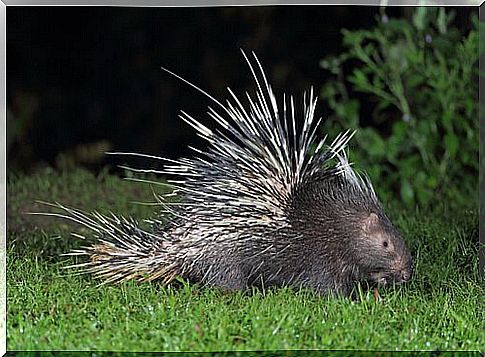
However, one of the most curious facts is that it also lives in Europe, in particular there are many populations distributed in Italy. The origin of these colonies is shrouded in mystery. In fact, the fossil finds confirm the presence of porcupines in Europe, but it is believed that the Romans probably introduced this animal to the Old Continent.
The defense strategy of porcupines
This strategy is triggered by multiple stimuli, such as suspicious smells, sounds or sudden movements. Its defense consists of a series of behavioral displays: the lifting of the thorns, the grinding of the teeth, the emission of odors and, finally, the attack.
Due to the shape of the body, the smell and the colors, its predators can often confuse the porcupine with a skunk. A dish certainly not very delicious for those who hunt this mammal. However, this porcupine certainly does not need to be mistaken for another animal, given the effective “armament” it possesses.
When the porcupine feels threatened, it raises its spines to the maximum, aiming to appear larger , while making noise by moving and chattering its teeth. Then, if the enemy advances, they resort to a strong odor emanating from the skin. The last move is the actual attack, practiced by a charge against the enemy with all the spikes raised.
Myths and truths about the thorns of the porcupine
It is important to note that porcupine spines are not poisonous nor can they be thrown, although the injuries they cause are due to infection. There are more cases of lions or snakes that have not been able to kill one of these animals, and that have died victims of the infections caused by the multiple injuries resulting from contact with the quills.
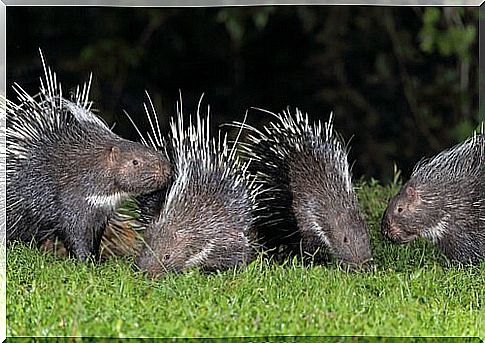
In fact, although they are very isolated cases, these animals have not only killed big cats and hyenas, but also people. That’s why you need to be extremely careful if you come across one. Best not to bother him.
Other curious behaviors
One of the most surprising things about the porcupine is that it is not afraid of water and, in fact, can even swim. They are nocturnal and monogamous animals. Their diet is herbivorous: they consume roots, leaves, bulbs and fruit.
Another of their more enigmatic behaviors is that they collect bones. Despite being herbivores, it has been seen how these animals collect bones of other species and store them. They are believed to be used to gnawing on them, which would allow them to file and sharpen their teeth, while also getting good amounts of calcium.
